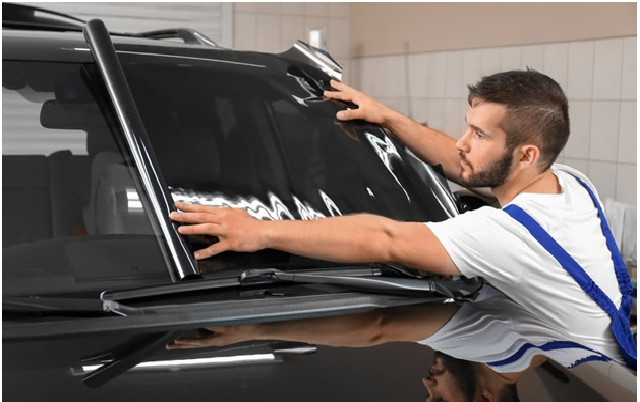
A Simple Guide on How to Tint Car Windows for Beginners
Tinting car windows is an integral part of car ownership. Not only does it keep out UV and excess heat, but tinted windows also enhance safety and privacy.
Therefore, knowledge about the tinting process is crucial whether you are a curious car owner, or a car specialist interested in learning it.
That, therefore, breeds the question, “How can you tint your car windows?”
Table of Content
What do you need?
Before handling the ‘how,’ it is crucial to understand the ‘what.’ Here are some of the things you need for a basic procedure:
- The film
- Cleaning materials: soap, water, a soft cleaning cloth
- Length measuring equipment
Step 1: Pre- Prepping
The first step in the pre-preparation stage is to select an appropriate working station. It can either be indoors or outdoors. Working indoors is great but can be limiting in the amount of working space and lighting conditions.
On the other hand, the outdoors is spacious enough but contains a lot of dirt and debris. The best choice is conditions between the two: adequate space and lighting and minimal exposure to dirt.
It is important to assemble all the necessary tools and equipment in one area. Ensure you gather everything in the right proportions to ensure you do not stop mid-work looking for things. This saves you both time and energy.
Step 2: Film selection
You ought to have chosen your desire film type before settling down to work. There are numerous options to choose from. As such, adequate research for your desired tinted windows will come in handy in helping you save time and make the right choice.
Some of the options you could opt for include dye, carbon, hybrid, metallic and ceramic tints. Your choice will be directly influenced by your preference, budget, and location.
Imagine filming your vehicle only to have to take it off soon after because it is illegal. Sounds pretty bad, right? But the truth is, it happens. Familiarizing yourself with the laws governing car filming in your state is a critical step before buying.
This is because some places restrict the use of tints beyond specific percentages of light. Knowing this early will help you make the right choices. See this link to read more about the films https://www.thedrive.com/reviews/27550/best-window-tints
Step 3: Cleaning
To effectively tint your windows, you need to ensure that both the windows and your working area are clean. To achieve this, first, pour running water along any dirt-ridden surfaces to prevent it from rising and interfering with your work. Do this, especially if you are working outside.
Next, vacuum your car’s interior to get rid of dirt and debris. Remove any stickers you may have placed in your windows. Lastly, use water and soap to clean the inner and outer surfaces thoroughly.
Be sure to avoid any ammonia-based soaps. If anything, regular dish soap will do the trick. Once the windows are spotless, dry them using a dry cloth.
Step 4: Measuring and Cutting
Here, you will need to use any proper measuring equipment to measure your windows’ dimensions. While purchasing your film, ensure you choose one that is big enough to exceed your filming needs.
Some points to note in this step:
- Measure the actual glass, not the frame.
- If windows are irregularly shaped, measure the widest area.
- Note down your measurements to the nearest inches.
As a beginner, cutting the film while on the window isn’t the best idea. Instead, create a window template using cardboard and use it while cutting. Or better yet, you could buy already pre-cut sections for your car model if available.
Step 5: Application
Everything you do from the first step to the fourth is in preparation for this step. As such, ensure you exercise a lot of care.
To apply your film, first figure out the adhesive side. Spray the window with soapy water. Then, roll down half of the film and spray it with soapy water. Roll up the window; slowly apply the adhesive side onto the window, taking care not to trap air bubbles.
Step 6: Smoothening
The possibility of trapping some air is nearly unavoidable. Smooth the film along the window. Using soapy water on the film and window makes this possible. After everything is smooth, you’re all done. Avoid rolling your windows for about days to allow it to set.
Conclusion
Tinting windows is hardly a new trend. However, it might take a beginner a couple of hours to get it right. If you are not up to the task, it would be best if you consult a professional.


